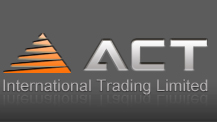The iPhone 17 maintains its previous price, with most core suppliers remaining Chinese companies.
On the early morning of September 10th Beijing time, the highly anticipated Apple autumn launch event was held as scheduled.
International Electronic Commerce News: At 0:00 a.m. Beijing time on September 10th, the highly anticipated Apple autumn launch event was held as scheduled. At this event, Apple unveiled AirPods Pro 3, three Apple Watch models, and four iPhone 17 series devices - including iPhone 17, iPhone Air, iPhone 17 Pro, and iPhone 17 Pro Max. The starting prices of the new models are 5,999 yuan, 7,999 yuan, 8,999 yuan, and 9,999 yuan respectively.


The iPhone 17 series has not increased in price.
It is worth noting that as the US version of the iPhone is mainly manufactured in India, last month the US government imposed a 50% tariff on imports from India. Industry analysts predict that the US version of the iPhone might increase in price by $50.
In fact, the base model of iPhone 17 has eliminated the 128GB capacity version. The storage capacity of the new model starts at 256GB, and the starting price is the same as that of the 128GB version of iPhone 16 last year. The iPhone 17 Pro has also eliminated the 128GB capacity version. The prices of the iPhone 17 Pro/Pro Max 256GB models are the same as those of the iPhone 16 Pro/Pro Max 256GB models last year.
Previously, industry analysts speculated that Apple might smoothly pass on the tariff costs by increasing the storage capacity of its entry-level models and simultaneously raising prices. But now it seems that Apple has not directly and brutally passed on the tariff costs to consumers.
Regarding this, Tom Menelly, the head of IDC's Devices and Consumers Research Department, commented, "Apple is leveraging its scale to try to keep the prices at the current level. I believe that, like most technology companies, Apple is very clearly aware that tariffs will affect consumers' purchasing power in the second half of this year, especially in the United States. Therefore, they will maintain the prices unchanged and try to enable people to complete the upgrade at the same price as last year by the end of this year."
The main suppliers for iPhone 17 are still mainly based in China.
As is well known, currently, the iPhone 17 sold in the US is mainly produced and assembled in factories in India. The production areas in China will continue to serve as the core shipping destinations for major markets such as China, Japan, and Europe.
According to Canalys' report, in the first half of 2025, the number of iPhones produced in India reached 23.9 million units, a significant increase of 53% compared to the previous year. And Apple shipped 226 million phones globally last year. This shows that the majority of iPhone production capacity still comes from Chinese production areas.
According to reports from Indian media, although the labor costs in India are cheaper compared to those in China, since many key components still have to be imported, the cost of manufacturing mobile phones in India is currently 5% to 8% higher than that in China, and sometimes even 10%. Of course, the Apple production base in India is also making progress year by year. From an early yield rate of only 50%, it has now increased to over 80%. At the same time, the production time for new Apple products is also synchronized with that in China.
It's not that the apple production base in India is developing too slowly; rather, China's industrial chain is too complete. The list of Apple's global supply chain released by Apple in April 2024 shows that Apple has a total of 187 core suppliers worldwide, among which 91 are from China. On the other hand, nearly 90% of these 187 core suppliers have factories in China.
As the relationship between China and the United States becomes increasingly complex, Apple is facing significant supply chain pressure. This is also the main reason why the company has frequently relocated its production capacity in recent years. Judging from the current situation, neither India nor Vietnam can currently match the production capacity of China.
For Apple, the essence of supply chain restructuring is a race between quality and time. They need to meet the requirements of US policies while avoiding losing the core market of China. In the coming years, this will be a crucial window period that determines whether Apple can maintain its position as the "King of Global Supply Chains".


 ENGLISH
ENGLISH  USA
USA  DEUTSCH
DEUTSCH  FRENCH
FRENCH 